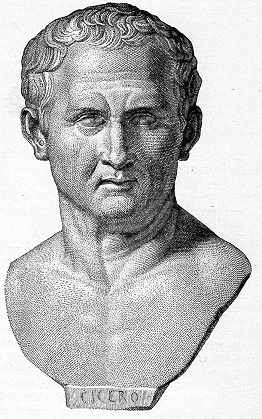|
 Cicero's Classical Format for Persuasive
Argument Cicero's Classical Format for Persuasive
Argument
Classical arrangement (simplified):
-
The Introduction is where you introduce your standpoint.
-
The Statement of Facts is put in terms that even your
opponents cannot deny.
-
The Division is a discussion of at what exact point you stop
agreeing with the opponent, and start disagreeing (what it is you
REALLY disagree on).
-
The Proof is where you present the arguments and
evidence you have to
support your standpoint.
-
The Refutation is where you bring up your opponents'
main arguments and prove they are wrong.
Caution: Refutation is not about YOU, it is all about
your OPPONENTS and their arguments (and why they are wrong).
-
The Conclusion may include an appeal to
emotion (pathos). In modern argument, it may also include a discussion
of what good things will happen if the audience accepts your
argument, what bad things will befall them if they do not agree, and
a clear statement of what you want your audience to do.
O.W. Rev. 10/13
| For educational purposes only. |
| Owen M. Williamson - Education Bldg 211E - phone: (915) 747 7625 - fax: (915) 747 5655 |
| The University of Texas at El Paso - 500 W. University Ave. - El Paso, TX 79968 | | Important Disclaimer |
Image is non-copyright. Source:
http://upload.wikimedia.org/wikipedia/commons/4/41/Cicero.PNG

Open Courseware | OCW |This work is dedicated to the Public Domain..
|